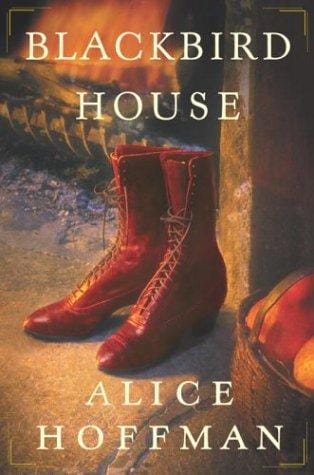Exploring Blackbird House: A Deep Dive into Alice Hoffman’s Haunting Novel
Discover the haunting history, themes, and characters of Alice Hoffman's Blackbird House in this engaging 800-word review and reading guide.

Introduction to Blackbird House
Few novels capture the bittersweet passage of time as gracefully as Alice Hoffman’s Blackbird House. First published in 2004, this collection of interconnected stories traces two centuries of love, loss, and resilience in a single Cape Cod farmhouse. Laced with magical realism and lyrical prose, it invites readers to witness how one small place can echo with the triumphs and tragedies of successive generations. Whether you are a long-time Hoffman fan or a newcomer seeking a captivating read, understanding the novel’s layered structure will heighten your appreciation of its haunting beauty.
The Setting and Narrative Structure
At the heart of Blackbird House stands a remote homestead built in 1778 after a devastating storm at sea. Isolated by acres of wild cranberry bogs and buffeted by Atlantic winds, the white-washed cottage is both sanctuary and stage. Hoffman divides the novel into twelve stories, each set in a different decade between the American Revolution and the late twentieth century. While every tale can be savored in isolation, subtle threads—recurring motifs, family heirlooms, whispered legends—bind them into a cohesive whole. The house itself becomes a living character, absorbing grief, preserving memories, and offering hope to new inhabitants.
Plot Overview Without Spoilers
The opening story, “The Edge of the World,” introduces farmer John Hadley and his sons, who vanish at sea on the night black-winged birds sweep across the sky. From this primal loss springs a legacy of longing that touches every future resident. Readers next meet women who trade Boston privilege for coastal hardship, war veterans haunted by old battles, and dreamers who plant orchards where salt once reigned. Although deaths, disappearances, and broken hearts recur, so do unexpected renewals: a child rescued from a snowstorm, a neglected garden bursting back to life, and letters finally delivered across decades. Each narrative adds another brushstroke to the house’s evolving portrait.
Major Themes
Blackbird House explores enduring themes of place, memory, and transformation. Hoffman posits that geography holds emotional residue: walls remember echoes, soil remembers footsteps. This notion resonates with readers who have ever stepped into an old building and felt a chill of recognition. The novel also interrogates the balance between fate and choice. While storms, wars, and superstitions shape the residents’ destinies, personal courage repeatedly bends the arc toward redemption. Finally, Hoffman celebrates the quietly heroic lives of women—fishermen’s daughters, wartime nurses, solitary artists—whose love of hearth and land sustains families in times of upheaval.
Symbolism of the Blackbird
The titular blackbirds serve as potent symbols. In folklore, blackbirds can herald death or act as messengers between worlds. Hoffman layers additional meaning: the birds flock to the house whenever pivotal change approaches, their dark wings both omen and promise. After a tragedy, a white blackbird—a rare albino—appears, suggesting purity amid sorrow and the possibility of rebirth. These avian images lend the novel its signature magical-realist shimmer without detracting from the emotional realism of the human stories.
Memorable Characters
Although each chapter introduces new protagonists, several standouts linger in readers’ minds. Lion Hadley, the sole survivor of the opening disaster, wanders the dunes in perpetual mourning yet inadvertently lays the foundation for future hope. Violet Cross, a Civil War widow with a gift for herbal medicine, battles both superstition and her own grief while nursing neighbors. Later, Emma Hawthorne, a twentieth-century painter, restores the weather-beaten cottage and, through her canvases, resurrects forgotten voices. Hoffman’s deft characterizations ensure that even briefly glimpsed figures feel richly alive.
Why You Should Read Blackbird House
Fans of intergenerational sagas such as The Red Garden or novels set in New England like The Witch of Willow Hall will find Blackbird House irresistible. The text’s mosaic structure makes it perfect for busy readers who can finish a self-contained story in one sitting yet still crave an overarching narrative. Hoffman's prose shimmers with sensory detail—salty fog, lantern light on snow, the tang of cranberries—that transports you instantly. Moreover, the book’s meditation on how ordinary lives ripple through history feels especially relevant in an age when people seek deeper connection to place and past.
Reading Guide and Book-Club Questions
If you plan to discuss Blackbird House with a book club, consider focusing on the following questions: How does the house itself evolve as a character? Which story resonated with you most strongly, and why? In what ways does Hoffman use magical elements to illuminate, rather than obscure, emotional truths? Discuss the role of lore and prophecy: do the characters fulfill destiny or defy it? Finally, explore how the novel portrays resilience—does hope arise from community, from nature, or from within?
Adaptations and Cultural Impact
While Blackbird House has not yet been adapted for film or television, its cinematic imagery and episodic layout make it a prime candidate for a limited streaming series. Readers often compare the book to Practical Magic, another Hoffman favorite that found success on screen. Teachers likewise incorporate excerpts into literature classes on magical realism, women’s history, and environmental writing, underscoring the novel’s cross-disciplinary appeal.
Final Thoughts
In just under 300 pages, Alice Hoffman crafts a poignant chronicle of the human spirit’s endurance against the relentless march of time. Blackbird House reminds us that places remember us, just as we remember places, and that every sorrow leaves room for unforeseen joy. Long after you close the book, you may find yourself listening for wings in the wind, wondering what stories your own walls would tell if given a voice.



